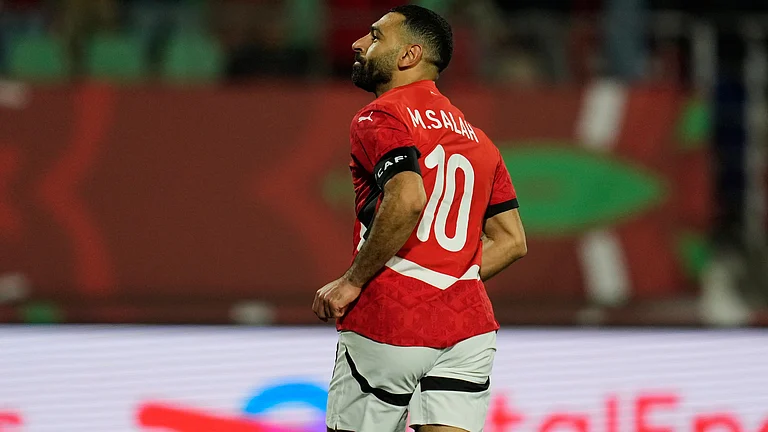Raju Damor, a Bhil Adivasi in his early 50s and a resident of Chhoti Khairu village of Jhabua district, around 300 km away from Madhya Pradesh’s capital, Bhopal, didn’t know that he would not be able to get his daughter-in-law treated in nearby hospitals. “In 2021, when she got badly injured in a bike accident, I took her to the government hospital in Jhabua. But they told me they didn’t have the infrastructure to treat her,” says Damor. He, along with his son, then decided to take her to a private hospital at Dahod in Gujarat, around 50 km away from his village, to save her life.
In the private hospital, Damor’s family spent 2.5 lakhs to fix her leg injury. “We even showed them our Ayushman Bharat card. But they said it wouldn’t work there,” adds his son. The experiences of Damors resonate across the Adivasi-dominated Malwa Nimar region that holds key significance in Madhya Pradesh, which is going to polls on November 17.
While the 47 reserved seats for Adivasis determine the fate of the political parties in the state, people allege that nobody has given enough importance to the health situation. “Most of the people from Jhabua, Alirajpur, Dhar go to Gujarat’s Dahod for medical treatment as there is no proper hospital equipped with tertiary treatment facilities,” says Dr. Anand Rai, a leader of Adivasi pressure group Jay Adivasi Youth Shakti (JAYS) that plays a formidable role in the region.
Rai was also the whistleblower of the Vyapam scam pertaining to the irregularities in the recruitment of medical, engineering and other professionals in 2013. “We have been asking the government to establish a tribal medical college and hospital in Jhabua for years but nobody is paying heed to us,” he adds.
Notably, Jhabua is the poorest district in the state, with 49.62% of its population reeling under multi-dimensional poverty, as per the latest NITI Ayog report. Along with it, among the top 10 poorest districts on the NITI’s list, six are Adivasi-dominated.
A few kilometres away from Damor’s village, in Shyamlia Bada, stays Mohan Singh Damor, who works as a security guard in PWD. His family members from nearby villages and districts have gathered to meet his ailing father.
Sitting around the bed where the frail, old body of his father is lying, Mohan says, “Yesterday, we took him to the nearby district hospital but they said nothing could be done now except await his death. So, we called out relatives to bid him goodbye.” On being asked whether he tried to go to Dahod for tertiary-level treatment, there was absolute silence. One of their relatives points out that he couldn’t survive the distance.
According to different health indexes, the performance of Madhya Pradesh has been persistently poor. The National Health System Resource Centre’s report published in 2021 shows that though the Infant Mortality Rate (IMR) in the state has dropped from 76 in 2005 to 46 in 2019, it is still much higher than the national average of 30. Even after improving to 66.5 in 2014-18, the life expectancy rate at birth in Madhya Pradesh is lower than the national average of 69.4.
The per capita government health expenditure of the state, as per the reports of the National Health Authority (2017-18), is estimated to be Rs 980 – far below the national average of Rs 1753. As per the data of NSSO (2017-18), the Out-of-Pocket Expenditure (OOPE) for the rural area in private hospitals is estimated to be Rs 26,041; for the public hospitals, it stands at Rs 2,987.
Although this data apparently reveals the fissures in the health infrastructure of the state; the BJP government, says a local reporter, hardly focused on the issue. In August, Chouhan announced a time-bound pay scale for the doctors following huge protests by around 15,000 doctors who demanded the implementation of Dynamic Assured Career Progression (DACP) – a policy through which the salary of the doctors would be periodically increased irrespective of their promotions.
While the BJP is not banking much on the health issue, Congress has declared Rs 25 lakh health insurance cover for all, besides Rs 10 lakh accidental coverage. “We will provide health insurance cover of Rs 25 lakh, which also has an accidental cover of Rs 10 lakh, for all the people,” says Kamal Nath while releasing the manifesto.
However, on the ground, people are not really aware of this promise. “Congress is unable to reap the benefit out of it. They should have given some names like Ayushman Bharat to make it popular,” says Chandravan Bhanwar, a senior journalist from Malwa Nimar region. “I don’t know whether Congress is going to provide us something like it. If it is true, nothing better than that,” says a resident of Syamlia Bada.
Will the health infrastructure in the Adivasi region impact the election campaign? The silence of Mohan sitting in front of his dying father leaves one in the dark.



























